Introducing Aviz Service Nodes R2.0 — Empowering Enterprise, Data Center and Telco Deployments
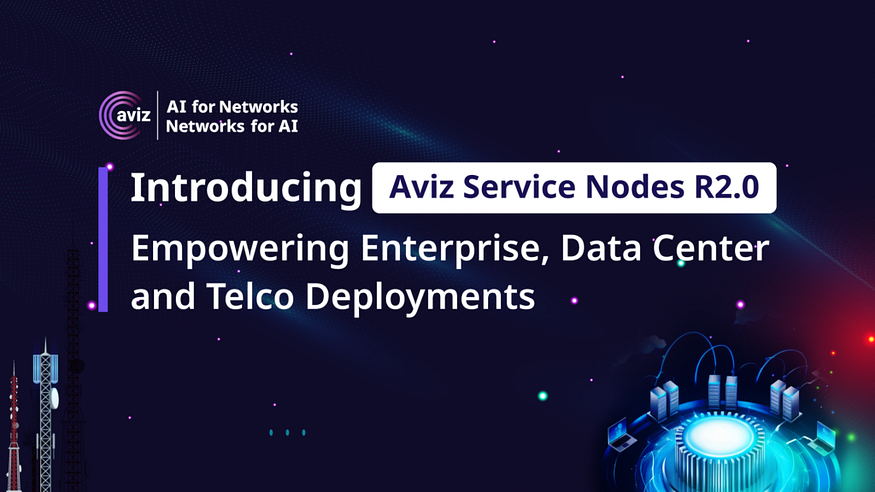
In today’s ever-evolving network landscape, staying ahead means continuously innovating. Building on the trusted foundation of our previous releases — including the robust telco features of 1.3.1 — we are excited to introduce R2.0. This release is not just an update; it’s a reimagining of how enterprise and telco networks operate, bringing you enhanced performance, precision, and peace of mind
What’s New in R2.0
In R2.0, we’ve focused on adding tangible value for our customers. Here’s a quick look at what you can expect:
- Enterprise & Telco Readiness: Fully ASN-ready for seamless deployment across large-scale networks.
- Packet Deduplication for DC: Optimizes network performance by eliminating redundant packet processing.
- Advanced DPI for IP Packets: Leverages cutting-edge deep packet inspection for precise application identification.
- Enhanced Packet Capture: Delivers robust support tailored for both telco and enterprise environments.
The image below provides a concise overview of ASN.
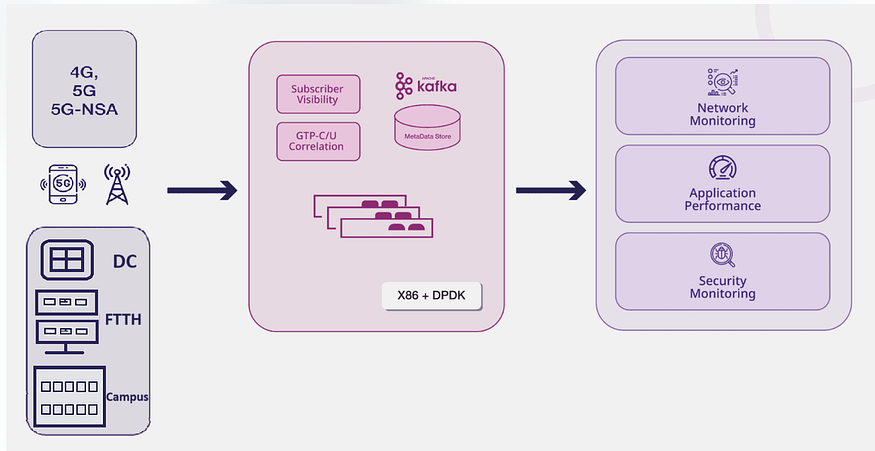
5G Core Advancements
ASN 2.0 is designed to handle the scale and complexity of both enterprise and telecom networks, ensuring seamless deployment and operational efficiency. It processes incoming telecommunication traffic, extracting critical metadata from 4G-LTE, 5G-NSA, and 5G-SA networks, providing end-to-end visibility for mobile operators and service providers.
With intelligent control-plane (C-Plane) and user-plane (U-Plane) correlation, ASN enables precise tracking of subscriber sessions, mobility events, and service quality metrics. Enhanced KPI monitoring now delivers sub-5-second precision for bandwidth and latency calculations, ensuring real-time network optimization. Additionally, optimized Kafka metadata export improves data accuracy and reduces processing latency, enabling faster insights and seamless analytics across modern network infrastructures.
Packet Deduplication
Our new packet deduplication feature is designed to streamline data flow. Removing redundant packets not only boosts processing efficiency but also improves real-time network analytics, ensuring your systems run at peak performance.
- Deduplication Process: Traffic is continuously analyzed in real-time with a granularity of up to 8 milliseconds, enabling the rapid detection and elimination of duplicate packets. The analysis process begins by inspecting ingress packets for familiarity based on their type and fields. If a packet is found to exist within the customer-defined time frame, it is identified as a duplicate and dropped. Users can configure the Packet Source (Full or Routed Packet) to filter out redundant traffic, even across multiple hops. Anchor & Offset settings define where and how packet data is compared, while the Window Size (2–8ms) ensures efficient real-time deduplication. For detailed configuration, refer to the GitBook.
Below is the FlowVision UI snapshot for Packet Deduplication
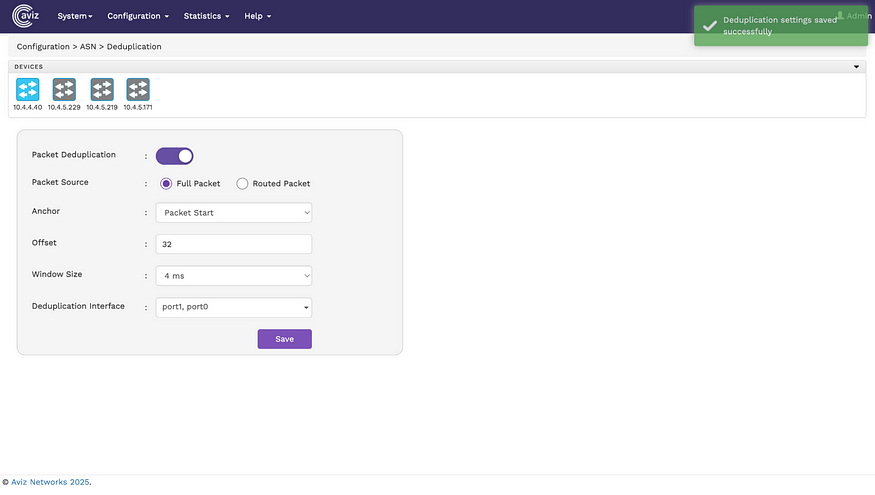

Application Identification with Advanced DPI
With ASN 2.0, we extend beyond telco packet correlation to deliver end-to-end IP network observability, making ASN a powerful solution for data centers, FTTH, edge, and campus networks. By leveraging Deep Packet Inspection (DPI), ASN can now classify over 500 applications at line rate, extracting critical network intelligence for enhanced traffic analysis and security. ASN’s advanced DPI engine uses pattern recognition, SNI matching, IP geolocation, and port-based analysis to identify applications with high accuracy. It also captures user agent metadata, bandwidth usage, and key performance indicators (latency, packet loss, and jitter), enabling operators to optimize network performance in real time.
Additionally, enhanced KPI monitoring in ASN 2.0 delivers sub-5-second precision for bandwidth and latency metrics, while optimized Kafka metadata export ensures faster processing and improved analytics. Here is a snapshot of our Kibana dashboard, showcasing metadata extracted by ASN along with application insights identified by ASN’s advanced DPI engine.
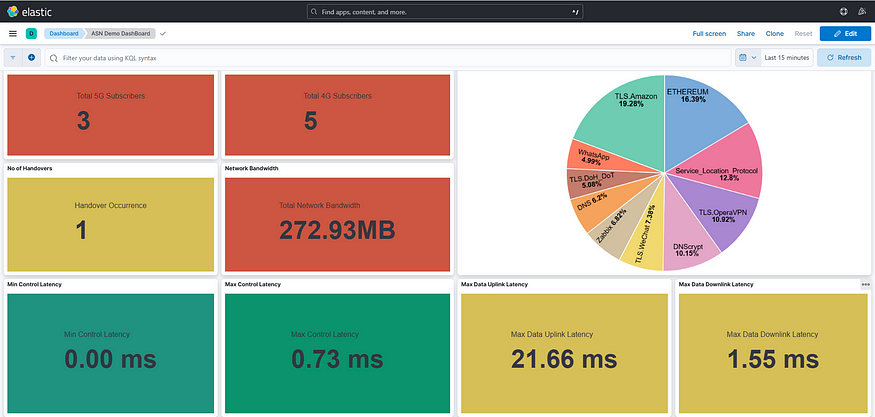
Comprehensive Packet Capture
Effective troubleshooting and network analysis are at your fingertips with our enhanced packet capture capabilities. Designed to meet the rigorous demands of both enterprise and telco deployments, this feature empowers your team to quickly diagnose and resolve issues. ASN 2.0 allows users to configure interface capture settings, selecting specific ports for Tx/Rx traffic analysis. Capture duration can be set between 1–10,000 ms, with a file size limit of 1–1,000 MB. Users can define filenames for captured data and enable automatic cleanup of old PCAP files. For detailed configuration, refer to the GitBook.
Enhanced packet capture capabilities in ASN 2.0 enable users to generate live traffic in PCAP format for real-time network analysis. Designed for both enterprise and telco environments, this feature streamlines troubleshooting by facilitating faster diagnostics and issue resolution
Below is the FlowVision UI snapshot for Packet Capture
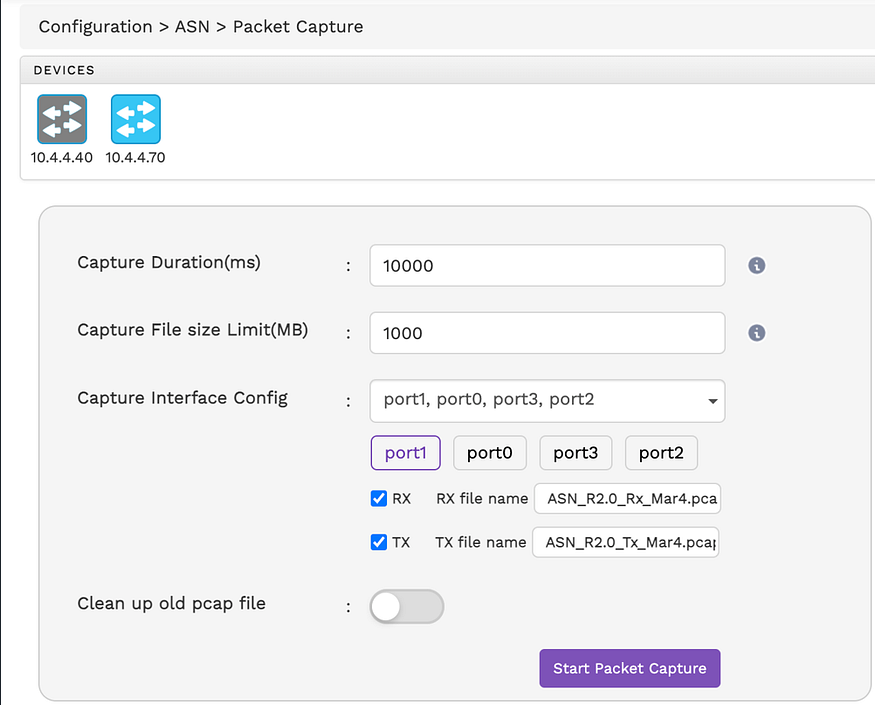
Real-World Impact: Benefits You Can See
Imagine a network where every packet is optimized for performance, every application is clearly identified, and troubleshooting is more efficient than ever. R2.0 is designed to empower your team, reduce operational costs, and provide the reliable network performance that modern enterprises and telcos demand.
R2.0 isn’t just an upgrade — it’s our commitment to continually pushing the boundaries of network observability. We’re excited for you to experience these innovations firsthand and look forward to supporting your journey into the future of enterprise and telco networking.
FAQ’s
1. What’s new in Aviz Service Node (ASN) R2.0 for enterprise and telco networks?
ASN R2.0 introduces packet deduplication, advanced deep packet inspection (DPI), enhanced packet capture, and real-time KPI monitoring. It’s designed for scalable deployment in enterprise, telco, and FTTH environments, optimizing performance and observability across complex infrastructures.
2. How does ASN R2.0 handle packet deduplication in real-time?
ASN uses 8ms granularity to detect and eliminate duplicate packets using configurable anchors, offsets, and time windows. This reduces processing overhead and boosts analytics accuracy — especially vital for high-throughput data center and telco deployments.
3. What applications can be identified using ASN’s advanced DPI engine?
ASN’s DPI engine supports over 500+ application signatures and identifies them using pattern matching, SNI, port-based rules, and geolocation data. It also captures user agents, bandwidth usage, and KPIs like jitter and packet loss for full traffic visibility.
4. Can ASN 2.0 help with real-time monitoring in 5G core networks?
Yes, ASN 2.0 supports 4G-LTE, 5G-NSA, and 5G-SA traffic analysis. It correlates control and user planes, tracks subscriber sessions, and exports enriched Kafka-based metadata for accurate, real-time visibility in mobile operator environments.
5. How does ASN support packet capture for enterprise and telco use cases?
ASN enables interface-specific packet capture with customizable file size, duration, and auto-cleanup settings. It supports Rx/Tx traffic filters, making it ideal for on-demand diagnostics and troubleshooting across large-scale enterprise and telco networks.


Comments
Post a Comment